GEOMAR Helmholtz Centre for Ocean Research Kiel
Communication and Media
Fon 0431 600-2807
Mail media(at)geomar.de
Biodiversity at Hydrothermal Vents
The first life on Earth may have originated at the black smokers in the deep sea. Here, over millions of years, an ecosystem has developed that is perfectly adapted to the conditions that are actually hostile to life. In an environment of absolute darkness, with extreme water pressure as well as water enriched with toxic metal compounds and temperatures of more than 350 degrees Celsius, there is a unique community of species.
Symbioses form the basis of this ecosystem. Bakteria obtain their energy, independent of light, from the conversion of sulfur and methane, the so-called chemosynthesis. Only thus microorganisms can use this "dark energy," in which no solar energy is used for life. Deep-sea animals such as crabs and clams cannot perform chemosynthesis themselves, but through their close community with the microorganisms, the animals gain access to nutrients that the bacteria have produced through chemosynthesis.
Individual animal species can harbor a great many different bacteria as subtenants. For example, up to 16 different strains of bacteria reside in the gills of a deep-sea mussel, each with its own capabilities and strengths. Thanks to this diversity of symbiotic partners, the mussel can adapt excellently to its constantly changing environment.
From the Video: Black Smokers – Ore factories of the Deep Sea
At the bottom of the sea, in a depth of several thousand metres, black smokers bring up valuable raw materials from inside the earth. Their metre-high vents seem to give off smoke like under water industrial chimneys. more


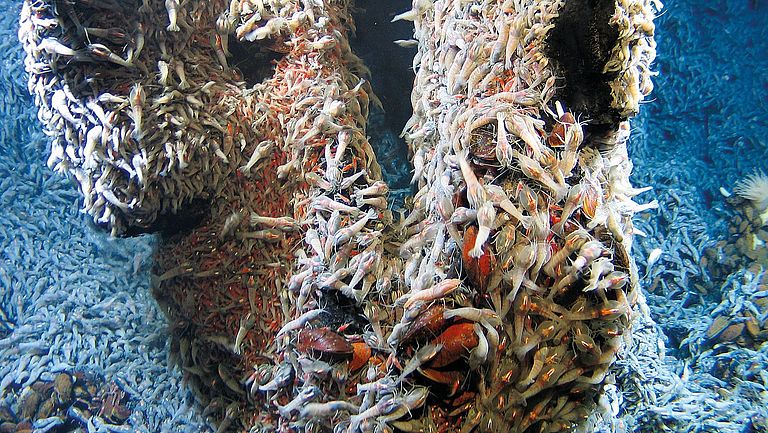
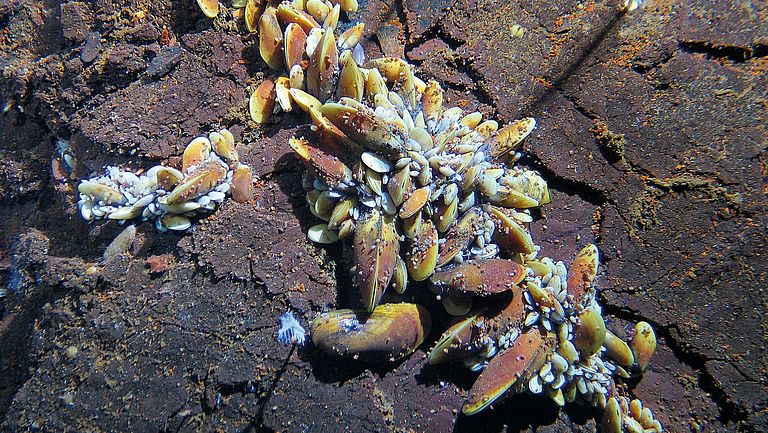
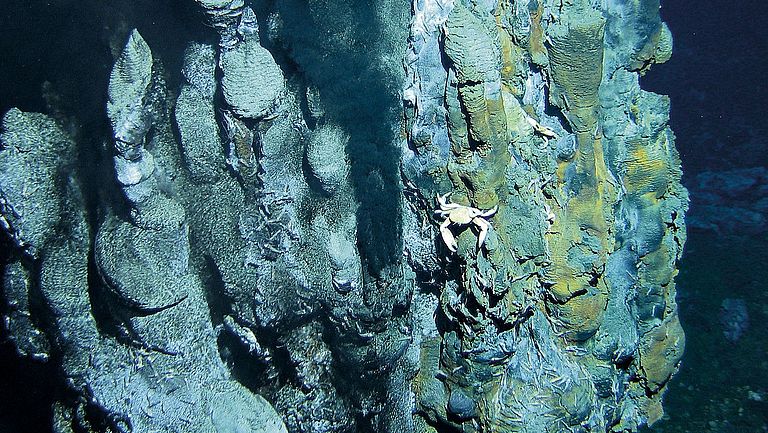
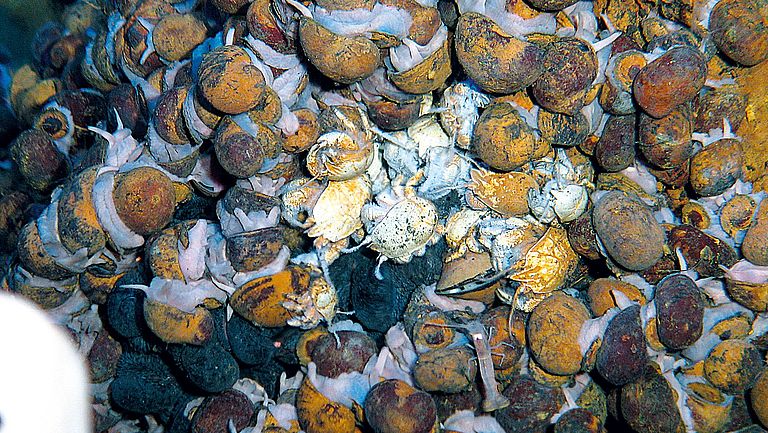
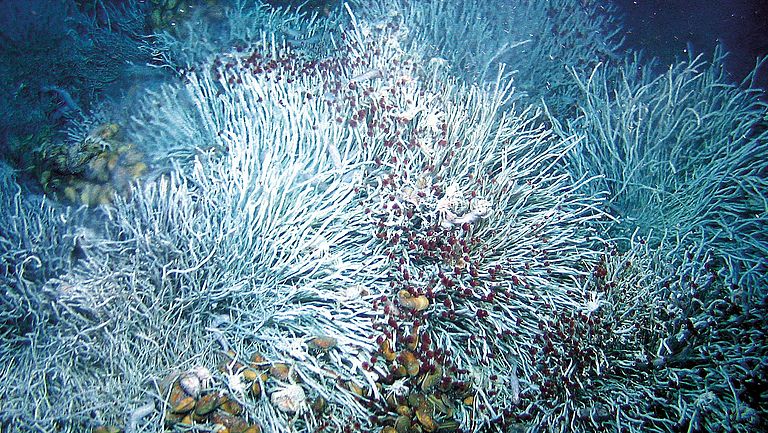
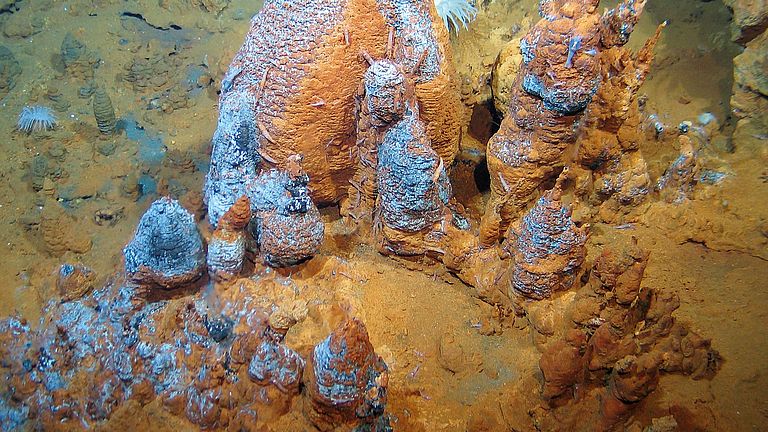
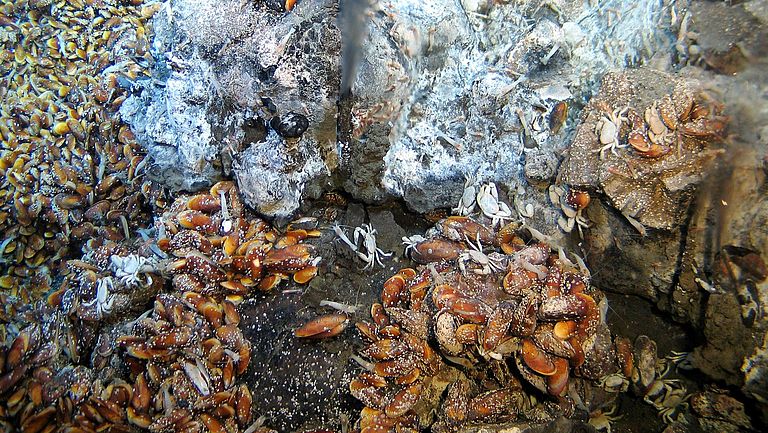

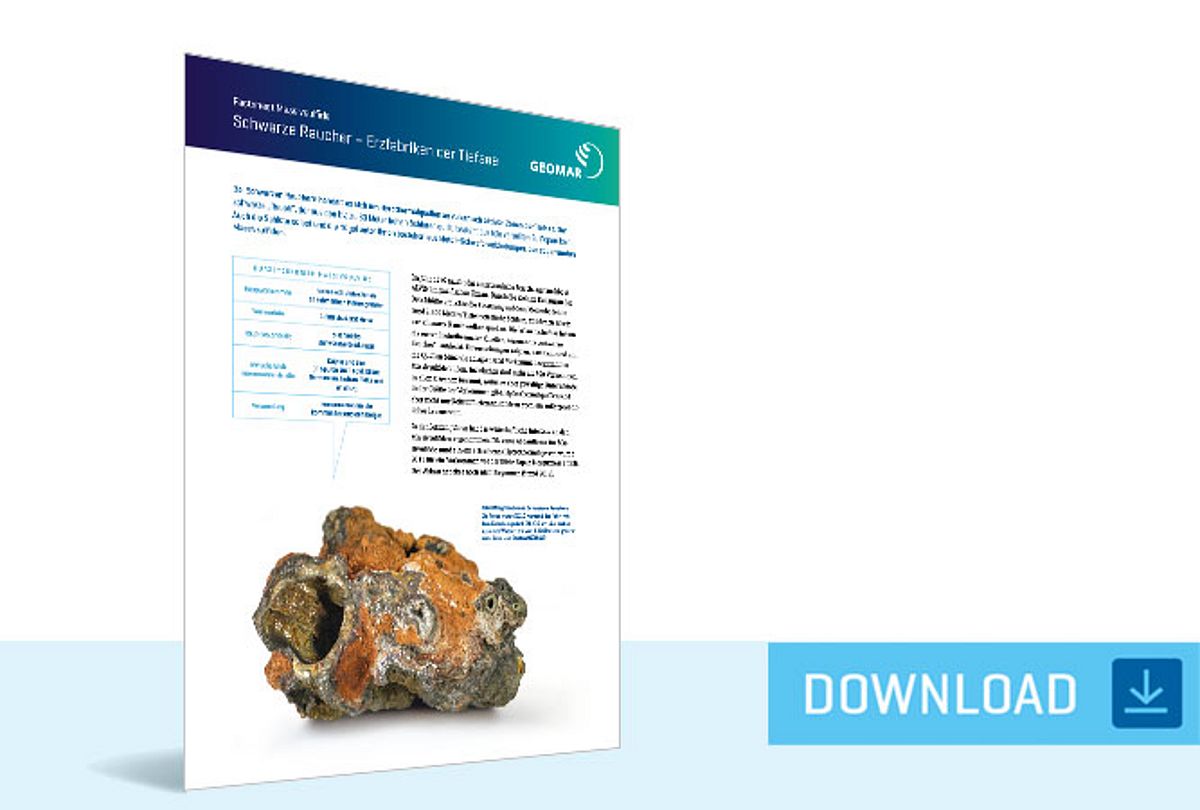
![[Translate to English:] Kieler Meeresbiologen kultivieren erstmals Muscheln von Hydrothermalquellen](/fileadmin/_processed_/7/7/csm_2014-01-24_17_CBreusing-mit-Bathymodiolus-azoricus_JSteffen-GEOMAR_69472531d8.jpg)
